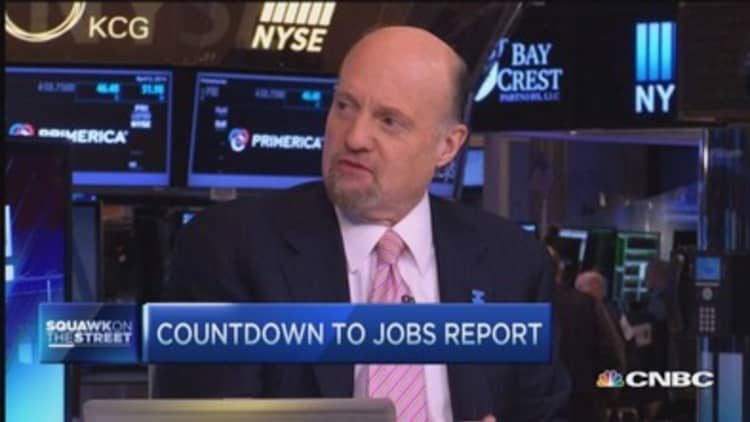
Things were supposed to be a whole lot different this year when it came to the bond market.
With economic recovery taking flight and inflation accelerating, the Federal Reserve would start to raise interest rates, government bond yields, naturally, would start drifting higher and the 10-year benchmark note would end the year somewhere north of 3 percent.
That, though, was pure theory, which has had a rather uncomfortable clash with reality.
Instead, the U.S. economy hobbled through the first quarter, inflation is still well short of the Fed's target, short-term rates are anchored near zero, and the 10-year has started the second quarter nestled comfortably below 2 percent, with the next 100 basis points seemingly miles away.
Oh, the Fed still is likely to do some type of pro forma rate hike before the year closes. But the climate in the bond market looks nothing like the picture Wall Street experts painted just a few months ago.
"The markets are just trying to get a handle on a large set of data, as well as Fed-speak that continues to double-cross us," said Kim Rupert, managing director of global fixed income analyst at Action Economics. "You think you have an outlook in mind and everything is set, then a Fed speaker or a piece of data come out and change your view."
As a result, yields are wallowing around their early-February levels and well below the 2.12 percent at the outset of 2015 and the 2.24 percent high back on March 6. The decline has come amid a stronger dollar and the continuous sliding of economic forecasts, with JPMorgan Chase on Thursday slashing its first-quarter gross domestic product outlook to just 0.6 percent from a previous projection of 1.5 percent.
Read MoreSam Zell: Why a stock correction could be coming
In the meantime, market participants are left to ponder the meaning of various conflicting Fed statements, with members touting the likelihood of a rate hike while acknowledging economic softness.
"The markets are so corrupted by all the different factors going on, especially central bank stimulus, that they're not really communicating price information very well," Rupert said. "All we can do is try to examine what the markets are showing us."
Investors around the world continue to purchase safe haven Treasurys despite the warnings of rising rates. China and Japan are still by far the biggest holders of U.S. debt, with both nations holding about $1.24 trillion each as of the end of January, the most recent Treasury data. China's holding decreased a bit while Japan's increased.
Even with the iShares 20+ Year Treasury Bond exchange-traded fund up 4.2 percent for the year, easily outperforming the Barclays U.S. Aggregate Bond Index growth of 1.6 percent, Wall Street is still betting on rising rates.
Read MoreGross rips 'hostile, artificially priced' market
Rupert has a 2.15 percent full-year target for the 10-year, while Michael Cloherty, head of U.S. rates strategy at RBC Capital Markets, believes the benchmark note will rise above 3 percent. Cloherty thinks the Fed will institute its first rate hike in nine years in June, though he said remarks from Chair Janet Yellen after the latest Open Markets Committee meeting did provide some uncertainty.
"After the Yellen speech, the burden of proof has shifted," he said. "Before, we had expected the Fed to go in June unless we see an economic slump. Now we think we're going to have to see a bounceback in the data from the end of the port strike and bad weather to get them to go in June. We're starting to run out of time."






